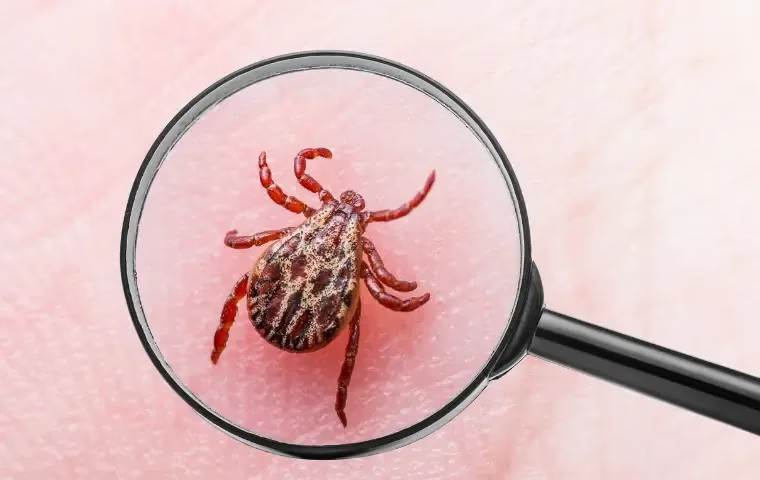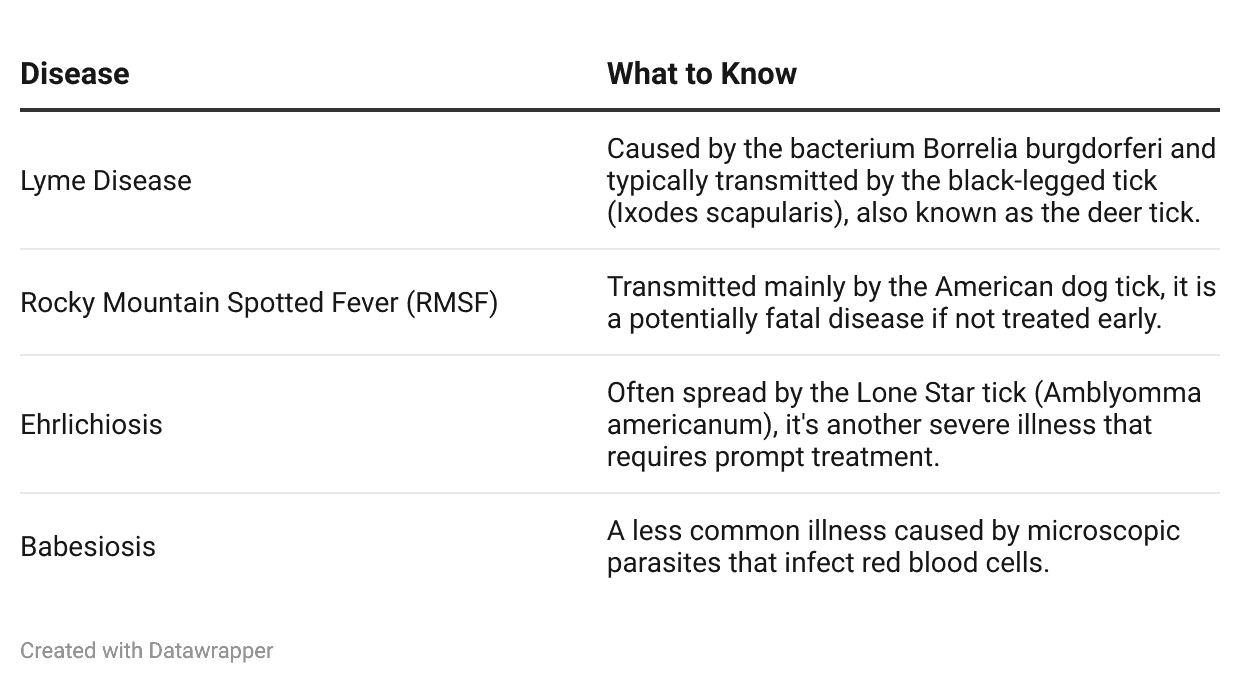7 Tips to Avoid Ticks in Florida

The warm climate in Florida's diverse landscapes fosters a thriving tick population, posing risks like Lyme disease to outdoor enthusiasts.
Awareness is the key for residents and visitors alike to minimize tick encounters. Simple yet effective measures like wearing protective clothing and using repellents are essential.
To keep ticks at bay, you can take these seven actionable steps through your choice of clothing and treatments by making your homes less inviting to ticks and looking after your pets.
1. Wear Proper Clothing and Gear
You should opt for long-sleeved shirts and long pants when venturing into wooded areas or places with leaf litter.
Clothing can be treated with 0.5% permethrin, a tick repellent that can be applied to clothing and is known to be effective for weeks, even after several washings.
Tucking pants into socks and wearing light-colored clothing can also make it easier to spot ticks. You can wear a hat to protect your head.
2. Use Tick Repellents and Chemicals
For skin application, you should choose insect repellents registered with the Environmental Protection Agency (EPA), which signifies they have been evaluated for efficacy and safety.
Popular active ingredients include DEET, picaridin, the oil of lemon eucalyptus, IR3535, para-menthane-diol, and 2-undecanone.
Following the manufacturer's instructions ensures proper protection when using repellent.
3. Maintain Tick-Free Zones at Home
You should pest-proof your yard to maintain a tick-free zone.
To prevent and control tick migration and build habitat in your backyard, mow lawns, remove leaf litter and tall grasses, and place wood chips or gravel between lawns and wooded areas.
4. Conduct Tick Checks and Removal
When spending time outdoors in Florida, it's crucial to perform thorough tick checks and know how to respond if you show symptoms of a tick-borne disease.
This means examining the following areas in your body:
- under the arms
- in and around the ears
- inside the belly button
- behind the knees
- around the waist
- between the legs
- primarily through the hair.
It's easier to spot ticks if you shower within two hours of being outdoors.
Removal: If any tick is found, removing it promptly and correctly is paramount. Here’s how to do it:
- Use fine-tipped tweezers to grasp the tick as close to the skin's surface as possible.
- Pull upward with steady, even pressure to avoid breaking the tick and leaving parts embedded in the skin.
- After removal, you should clean the bite area and your hands with rubbing alcohol, soap, and water.
5. Stay on the Trail
When venturing outdoors in Florida, like hiking and camping, taking precautions against ticks is critical, particularly in areas with dense vegetation and wildlife.
Ticks often reside in leaf litter and long grass. When hiking, adhering to cleared trails minimizes contact with these tick hotspots. This is especially true during the summer when ticks are most active.
6. Use Pet-Approved Repellents
For pets, you can keep them on leashes. Use veterinarian-recommended tick prevention treatments on pets before trail walks or camping. This can include topical applications, tick collars, or oral medications.
7. Brush and Inspect After Excursions
After a hike or visit to a park, thoroughly brush your pet's coat and check for ticks, especially:
- Within the fur
- Around the ears
- Under the collar
- Between the toes
Remember, pets can carry ticks into your home, so keeping them protected safeguards the household.
Equipping yourself with knowledge is critical to safely enjoying Florida's natural splendor.
By taking proactive measures, you can significantly reduce the likelihood of tick bites and fully relish the Sunshine State's great outdoors.
Understanding Ticks in Florida
In Florida, ticks are more than a minor nuisance—they can carry serious diseases.
Knowledge about tick species, their life cycle, and the diseases they harbor is crucial for staying safe.
Tick Species and Habitats
Florida hosts several tick species. These ticks prefer areas with dense vegetation and warm, moist environments—typical of Florida’s climate.
The most common ones are:
- American dog tick: Often found in areas with little or no tree cover.
- Lone Star tick: Prefers wooded, shrubby areas and is known for being aggressive.
- Gulf Coast tick: Typically inhabits coastal regions and maritime forests.
Life Cycle and Seasonality
Ticks undergo four life stages: egg, larva, nymph, and adult.
In Florida, ticks are active year-round, but peak activity occurs in the spring and summer when they are in their nymph stage during warmer temperatures.
- Egg -> Larva -> Nymph -> Adult
- High activity: Spring and Summer
Tick-Borne Diseases in Florida
Ticks in Florida are vectors for several diseases, including:

Health officials, like the Florida Department of Health, monitor cases of these diseases, Southern tick-associated rash illness (STARI), and anaplasmosis.
Frequently Asked Questions
How should you treat a tick bite effectively?
If bitten by a tick, you should promptly and carefully remove the tick with fine-tipped tweezers, ensuring not to squeeze the tick's body. Afterward, clean the bite area thoroughly with soap and water.
What are the smartest strategies to keep ticks out of your yard?
You can maintain your yard by keeping grass short, removing leaf litter, and creating a wood chip or gravel barrier between the lawn and wooded areas to inhibit tick migration.
Remember that these remedies can only provide temporary relief. So, contacting and consulting with pest control services for professional countermeasures is essential.
